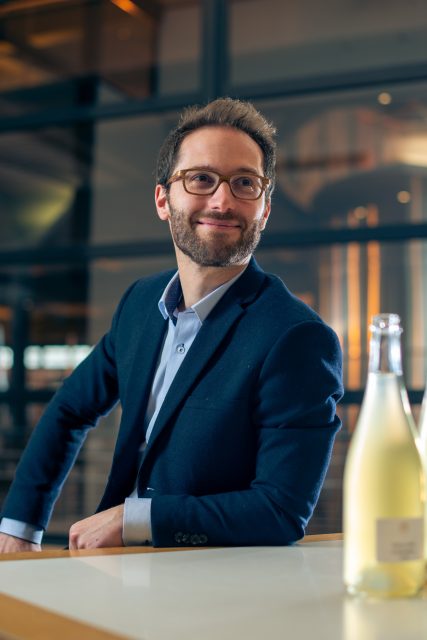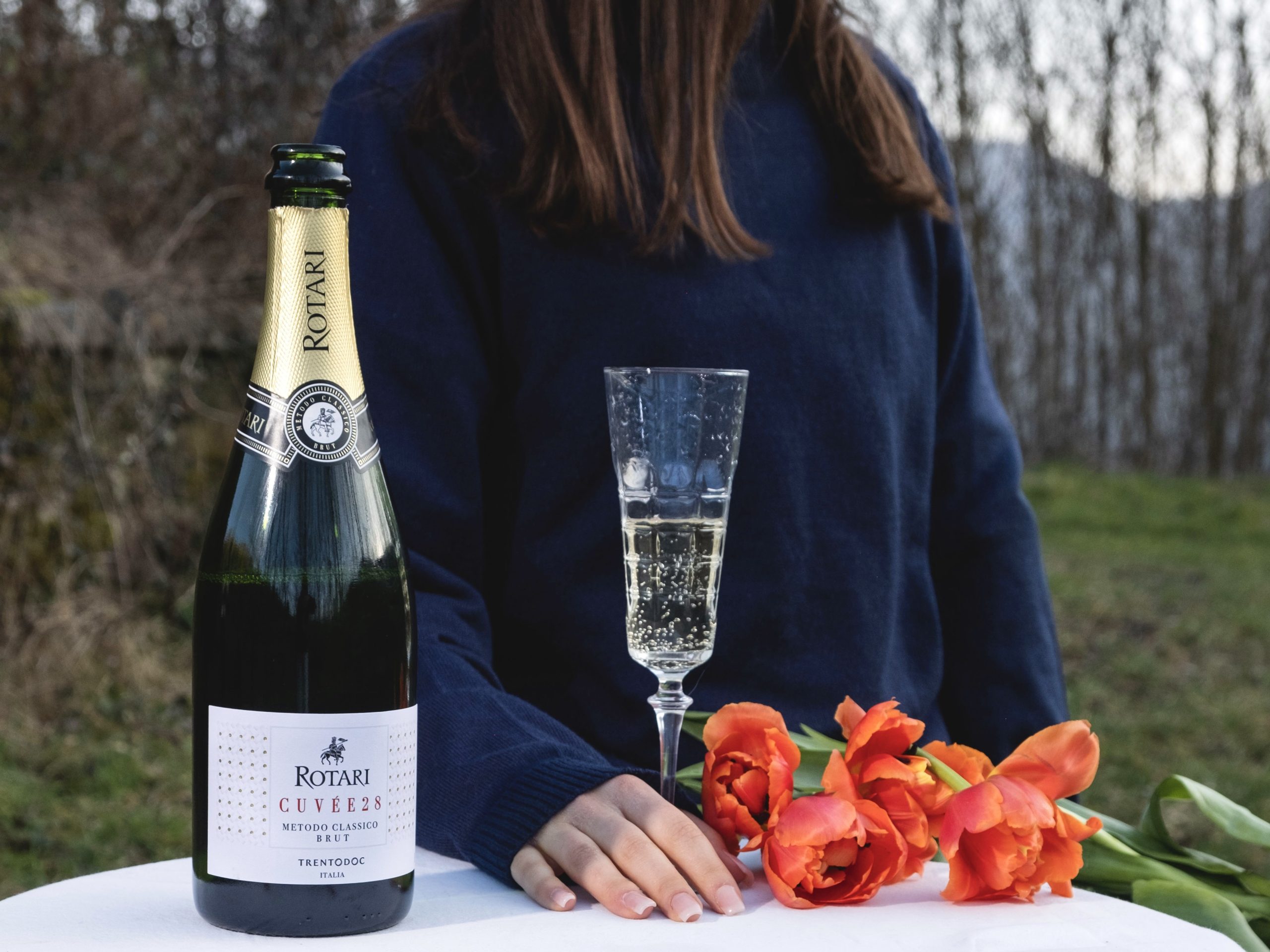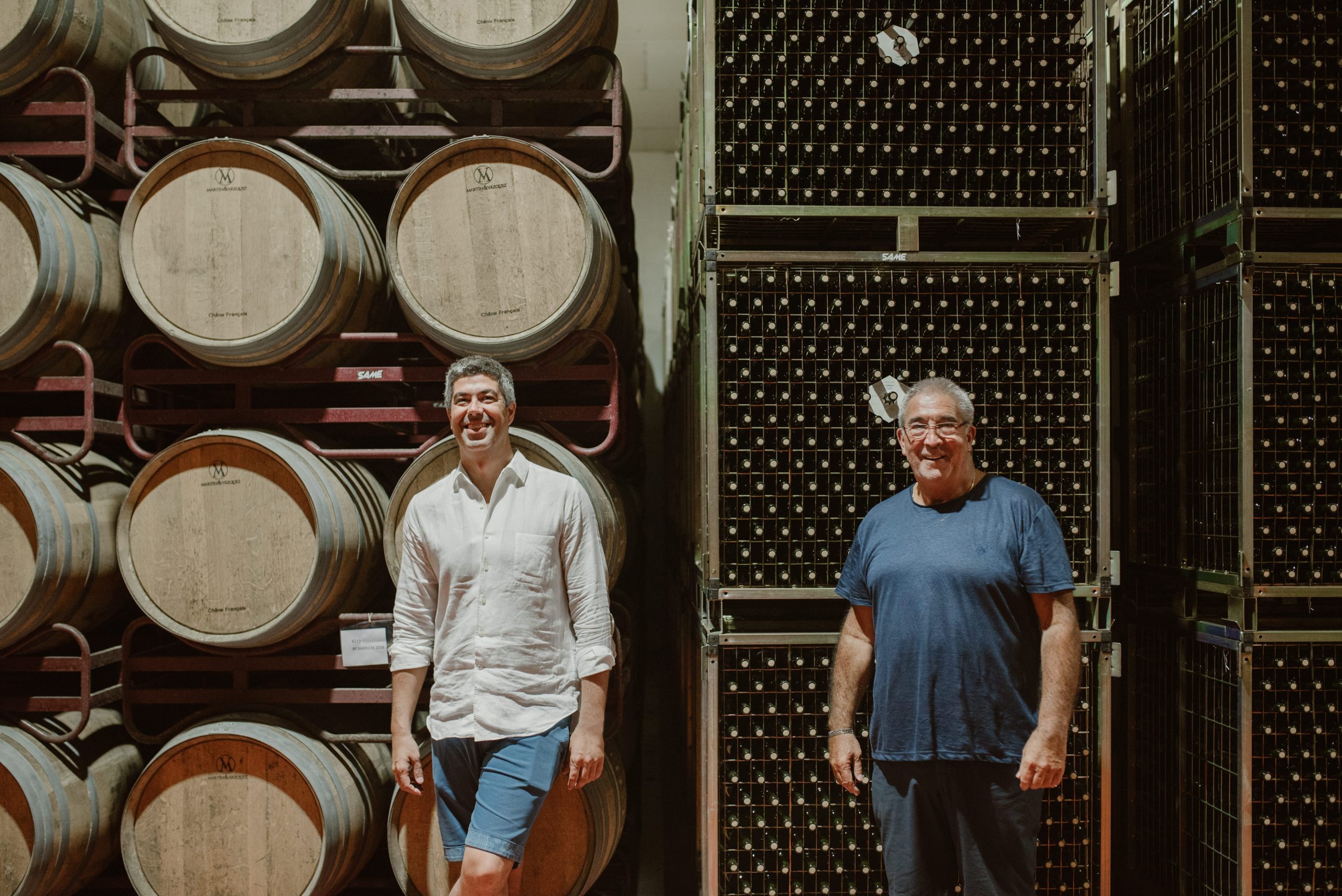Émilien Boutillat: ‘Environmental awareness is not a trend but a necessity’
Emilien Boutillat, chief winemaker at Piper-Heidsieck, is all about breaking with tradition and innovating to entice the next generation, but climate change remains Champagne’s biggest challenge, he tells db.

in 2018 Emilien Boutillat, chief winemaker at Piper-Heidsieck, took over from legendary winemaker Régis Camus. Not that it phased this rising winemaker, who grew up in Champagne and was raised on his father’s Pinot Meunier vineyard.
Prior to joining Piper-Heidsieck, he worked as cellar master for Champagnes Cattier and Armand de Brignac, and has also worked stints in South Africa (La Motte Estate), Chile (Viu Manent), the US (Peter Michael Winery), New Zealand (Mud House Winery) and France (Château Margaux).
Last month, Piper-Heidsieck unveiled its latest marketing campaign, Twist the Script. Brought to life through a collaboration with British artist Miles Aldridge, the campaign aims to emphasise Piper-Heidsieck’s maverick spirit. Boutillat’s appointment itself could be seen as a bold move, while Piper was also the first Champagne house to achieve B Corp status. The brand has also invested in Vitibot, a wine robotics business, to support development in sustainable viticulture.
It’s a house that is looking to the future. But Piper-Heidsieck, like all Champagne houses, has faced significant challenges in recent years, not least navigating the long-lasting impact of the pandemic and ongoing inflationary pressures. Champagne shipments have now normalised after a tumultuous few years. But the threat of climate change is still the region’s most pressing issue.
“This environmental awareness is not a trend but a necessity,” says Boutillat. “The Champagne industry, like any other sector, should take proactive steps to ensure that sustainability actions are genuine and meaningful.”
Here, we speak to Boutillat about his open-minded and innovative approach to winemaking, how he hopes to attract the next generation, and how Piper is working to mitigate the risk of future environmental damage.

Champagne has weathered declines, a bounce back and shortages in recent years. Volumes have now levelled out, but prices are higher. What’s your view on where the Champagne stands now?
It’s true that the last few years have been full of crises and rebounds as spectacular as they were unexpected. Tensions over grape supplies and galloping inflation led us to raise our prices. We have now entered a more stable phase, or so I hope, but the price of a bottle of Champagne is now higher. There’s bound to be a period of adjustment for the consumer. The most important thing is that during this period we have continued our efforts to improve the quality of our wines and the quality of our viticultural practices to make them ever more virtuous and environmentally friendly. With the constraints of global warming, producing exceptional Champagnes is a growing challenge. I’m convinced that Champagne consumers will be grateful for these ongoing efforts, even if they have to pay a little more for their bottles.
Partner Content
In your view, what are the biggest challenges facing Champagne today?
If we look long term, the biggest challenge for the Champagne region remains climate change. It is affecting us more and more, with extreme weather: spring frost, hail, heatwaves, floods etc. Over the last 30 years, we are also harvesting earlier and earlier and the maturity of the grapes is higher and higher. In that context of changes, we need to adapt our ways of producing grapes and wines in order to preserve the freshness, the potential of ageing and our style. Sustainable farming, picking dates, interest of cooler terroirs, blocking malolactic fermentation, reducing the dosage are some of the responses we still have to adapt to climate change and preserve the style of our champagnes. But it is also important to solve the problem at the source.
The Twist the Script campaign is all about how Piper-Heidsieck does things differently. As chief winemaker, how do the values of the campaign inform your winemaking choices?
One of the first Twist is around Pinot Noir, the House’s emblematic grape variety. Pinot Noir usually offers powerful, structured wines in Champagne. In contrast, at Piper-Heidsieck we want to emphasize its vibrancy and minerality to produce vertical and elegant wines. Our Essentiel Blanc de Noirs embodies this approach perfectly. Another bold approach is to twist the concept of prestige cuvée. Instead of a traditional, classic prestige vintage cuvée, we chose to have a collection of exclusive, limited-edition and free-spirited wines from Champagne with the Hors-Serie collection. After two revisited oenotheque vintages, 1971 and 1982, we’ve taken an even more innovative approach with our new Hors-Série Coteaux Champenois 2022 launched only few days ago. With strong, bold choices such as making a still white wine from Pinot Noir, using only stainless-steel vats for elaboration, and choosing a screw cap to respect and preserve the expression of two Grands Crus terroirs. The objective was to shake up conventions and push boundaries.
Why is it important that Champagne houses break from convention and innovate to bring something new?
Champagne’s success is the result of a constant reassessment. Throughout its history, Champagne has always managed to innovate to keep pace with new technologies, climate change and needs of today’s consumers. The same applies to Piper-Heidsieck which has always innovated on the technical, oenological, and viticultural levels throughout its history. Innovation does not mean forgetting history and tradition, it is about finding a balance between the two. Since 1785, Piper-Heidsieck has attached great importance to innovation and to its pioneering role in Champagne. We were the first champagne house to make extensive use of Gyropalette® in Champagne. Our winery, built in 1995, was very modern for this time and is still extremely up to date. Piper-Heidsieck was also amongst the first two champagne houses to invest in the Champagne start-up VITIBOT (a world leading wine robotics business), developing the BAKUS autonomous vineyards robot, to further lead the way in sustainable viticulture.

With ongoing competition from other sparkling wine regions, what is Piper-Heidsieck doing to remain competitive and also appeal to younger consumers?
Attracting younger consumers is a subject that is very close to our hearts at Piper-Heidsieck. They are both curious and sometimes very knowledgeable about wine, but they are also sensitive to brand commitments. At Piper-Heidsieck, to connect with these consumers, we rely on transparency, illustrated by the cuvée Essentiel, and strong commitments symbolised by our B Corp certification. Telling the story of our House, as we are doing with “Twist the Script” campaign, is a way of sharing our daring, avant-garde DNA, to which younger consumers are [responsive].
What are the biggest trends that you are seeing in Champagne, and how are they reshaping the category?
The offer of Champagne today is much wider than before. Consumers can still find the classic historical blends: Brut NV, Rosé NV, vintages,… that made the success of Champagne in the past. However, a new trend of crafting more and more premium blends of Non-Vintage Champagne has arisen as well as Extra-Brut Champagne, Single vineyards Champagne, Coteaux Champenois. I really think that this diversity of Champagne is amazing, and places Champagne more and more in the world of fine wine. Consumers are also increasingly curious and demanding on both transparency and sustainability.
Who is your inspiration in the world of wine and why?
As Champagne is a world of passionate people, I am meeting lots of inspiring people every day that are bringing their own touch to the wine industry. During my career, my encounter with Nicolas Morlet, while working at Peter Michael Winery, was truly inspiring. Nicolas, a fellow Champenois, is a winemaker and also a graduated nose in perfume. I really admired his precision in selecting specific vineyard picking dates, based on certain desired aromas. His extremely developed nose added another layer of complexity to winemaking and I learned a lot from him. I could mention lots of other men and women who have inspired me: my father, of course Régis Camus, and Myriam Faure-brac, who has been part of our winemaking team for more than 30 years and is a real guardian of Piper-Heidsieck’s historical style.
Finally, what has been your biggest lesson over the past six years?
I am lucky to be in a House that trusted me when I was very young, and that generally trusts young people in its teams. At Piper-Heidsieck, there is a real desire to share knowledge and expertise. When I arrived, I took the time to taste with Regis Camus (the house’s former cellar master) and the team, to get a feel for the house’s style and history. Humility is key when you become Cellar Master of such an historic and iconic Champagne House. We all are just passing through a House that has been in business for almost 240 years. It is therefore important, to listen to and share with the team always, in order to preserve the legacy of the brand and to transmit the Piper-Heidsieck know-how and to preserve the legacy of the brand. That is an important lesson to always remember.
Related news
Piper-Heidsieck unveils Marilyn Monroe charity bottles
Champagne Ayala and Piper Heidsieck: the 2018 vintages hits the market
Piper-Heidsieck creates bespoke Champagne for Wright Brothers




